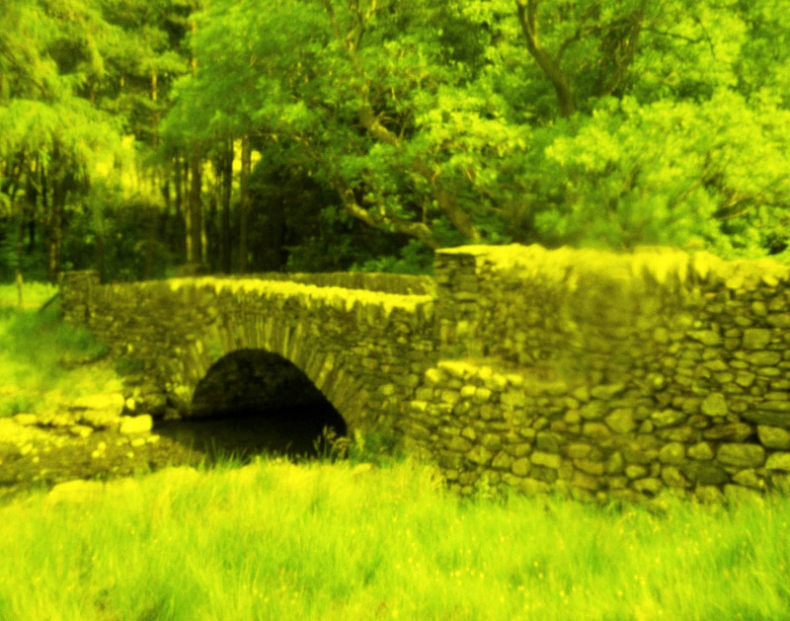
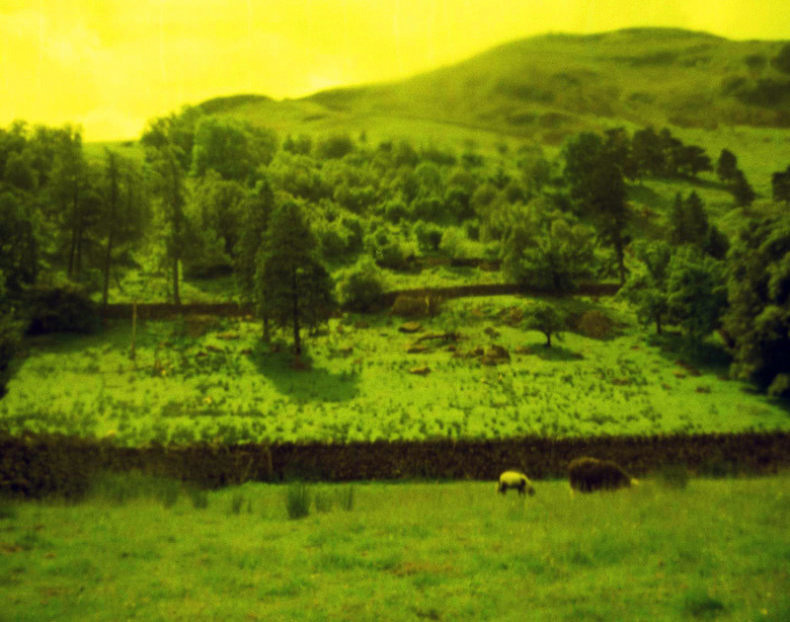
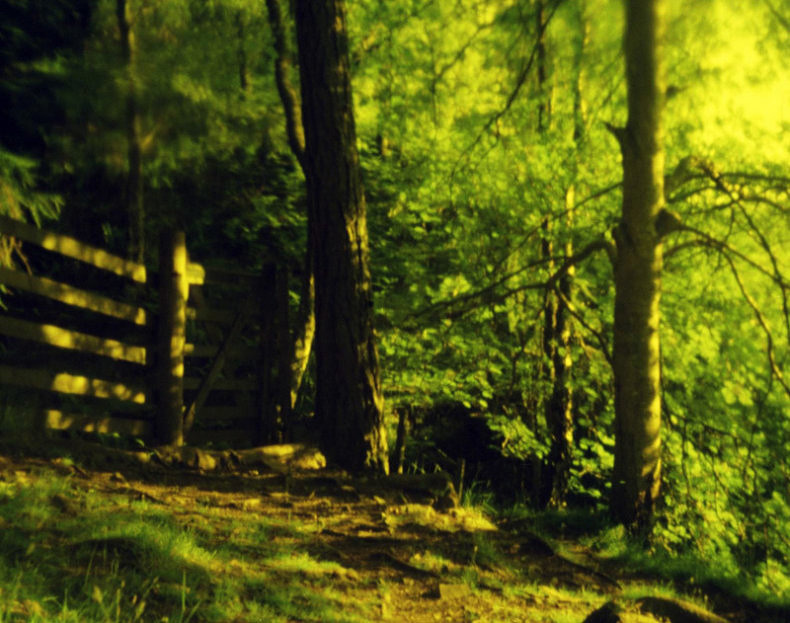
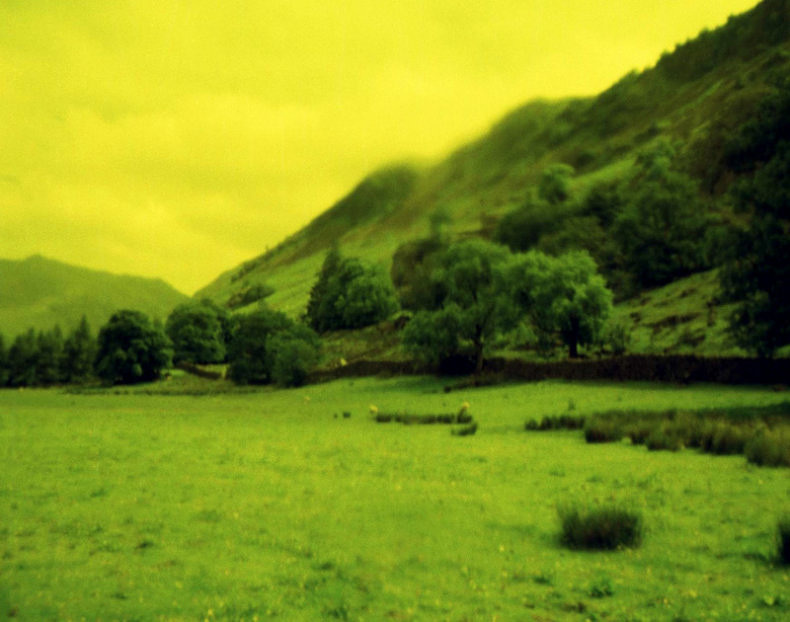
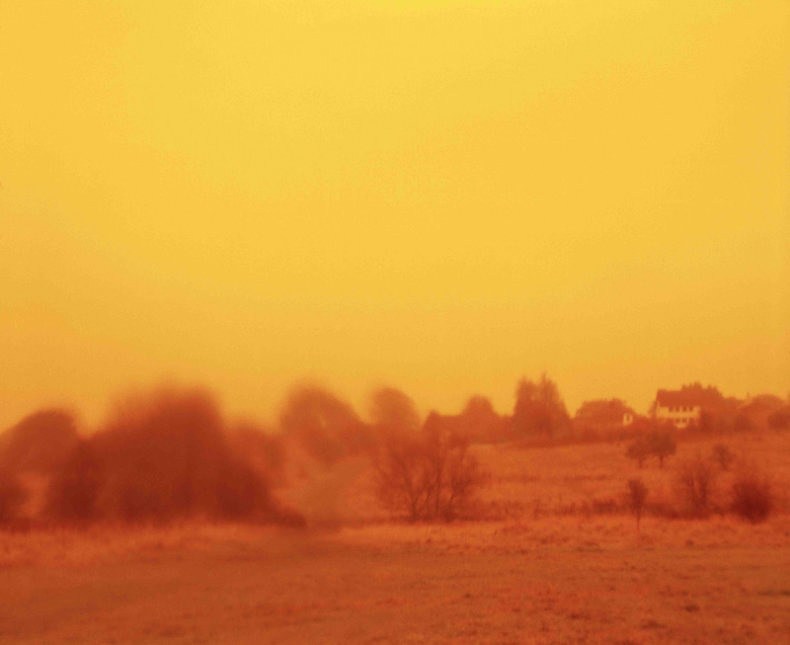
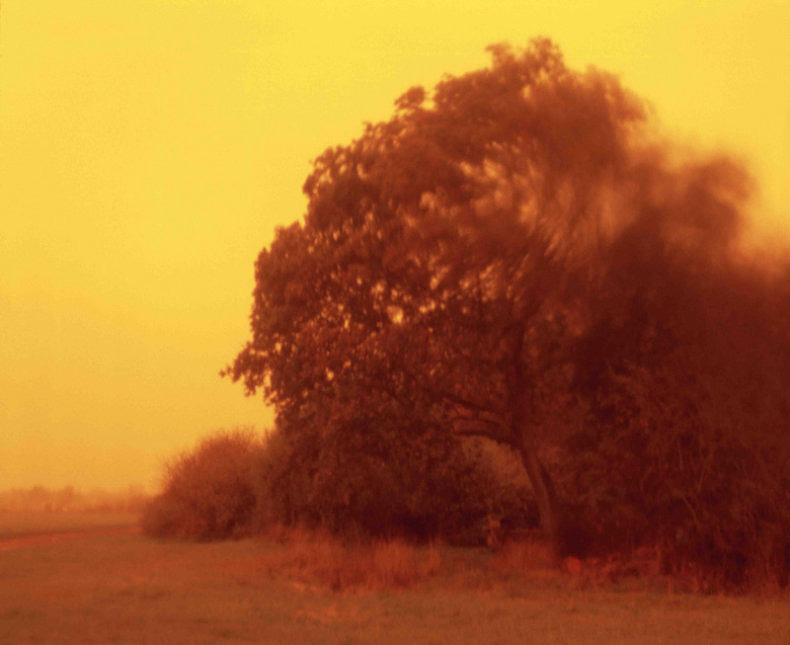
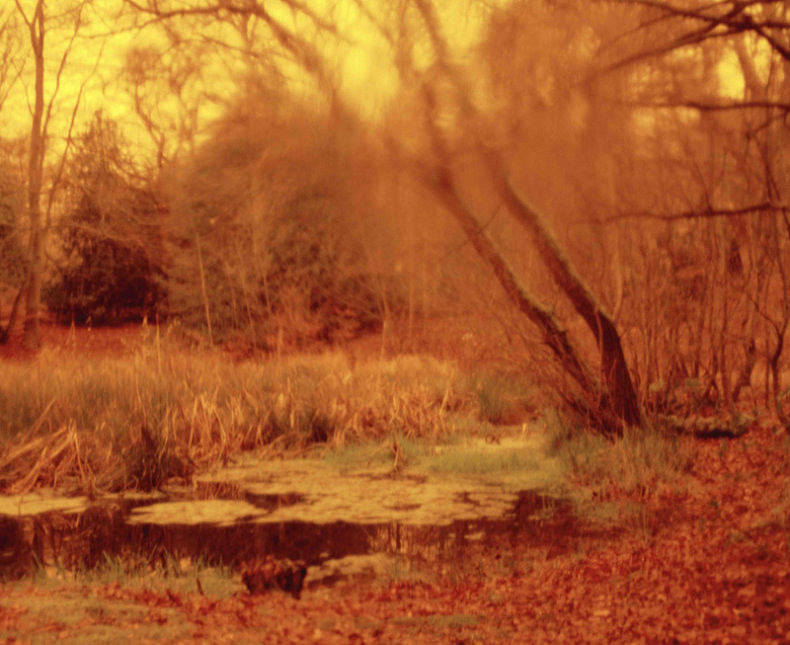
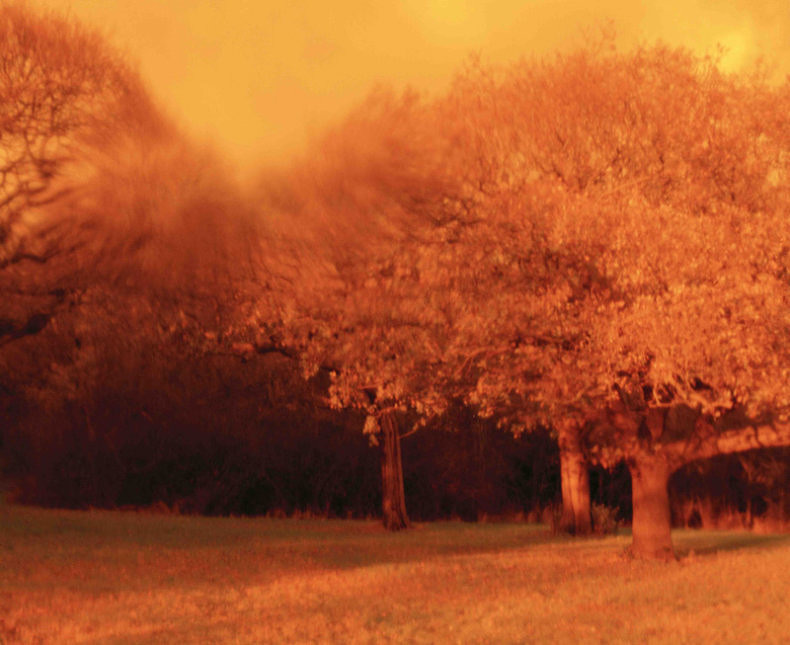
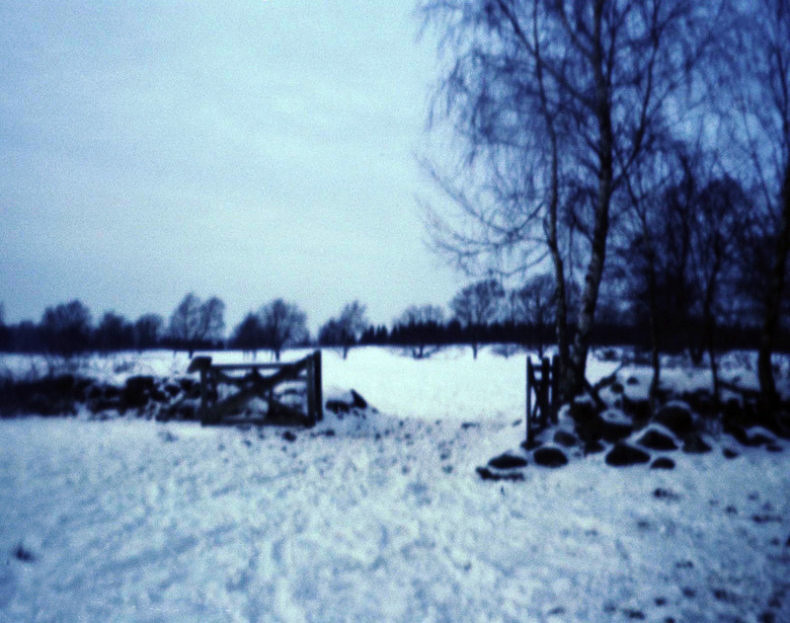
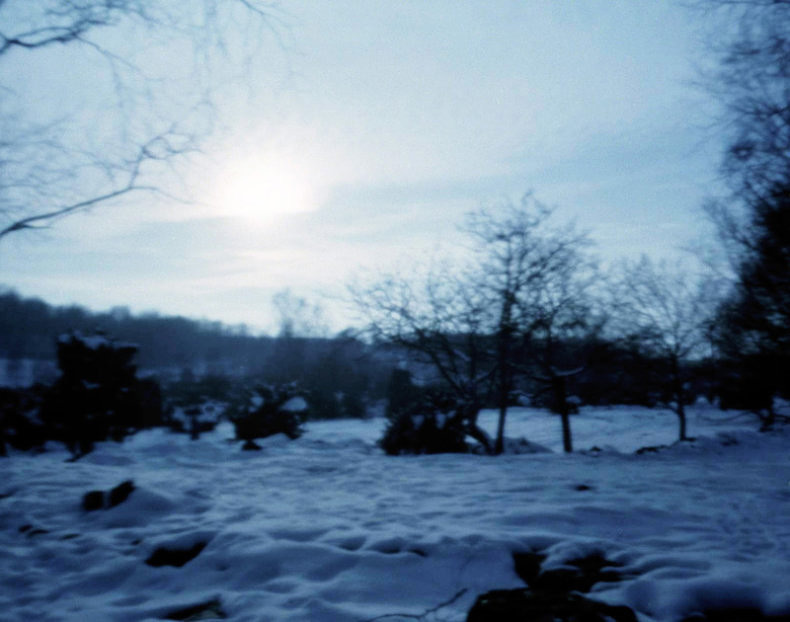
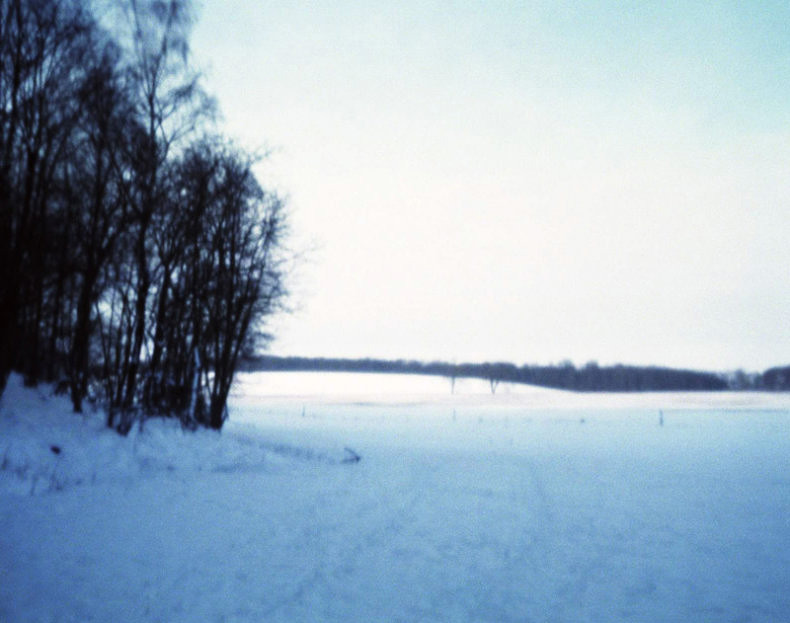
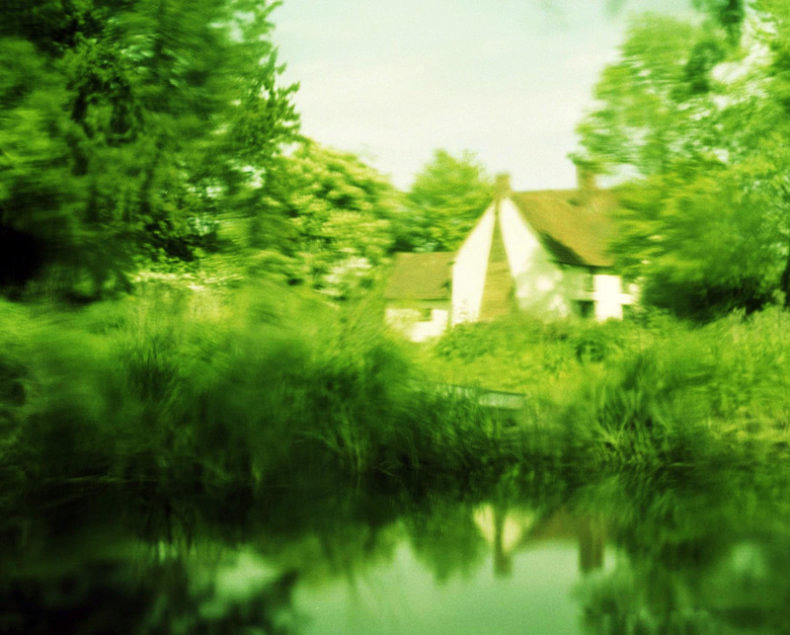
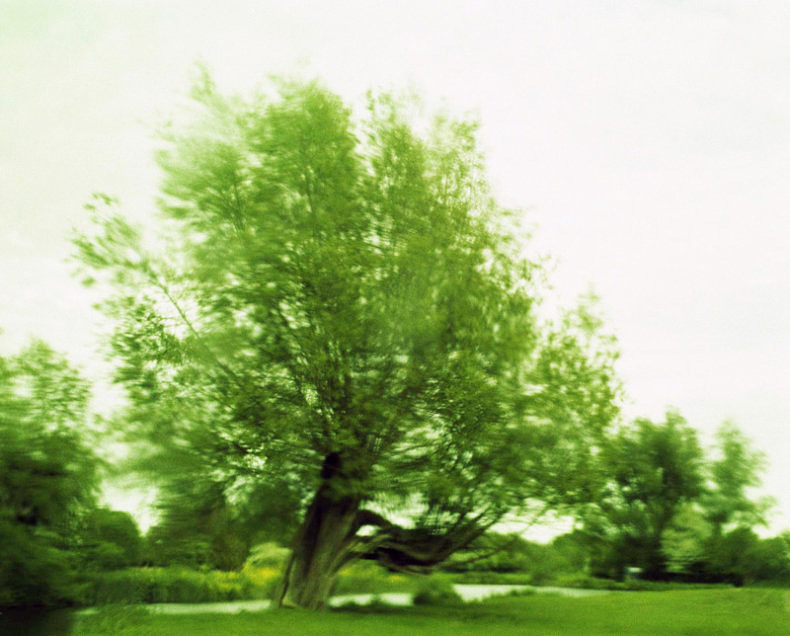
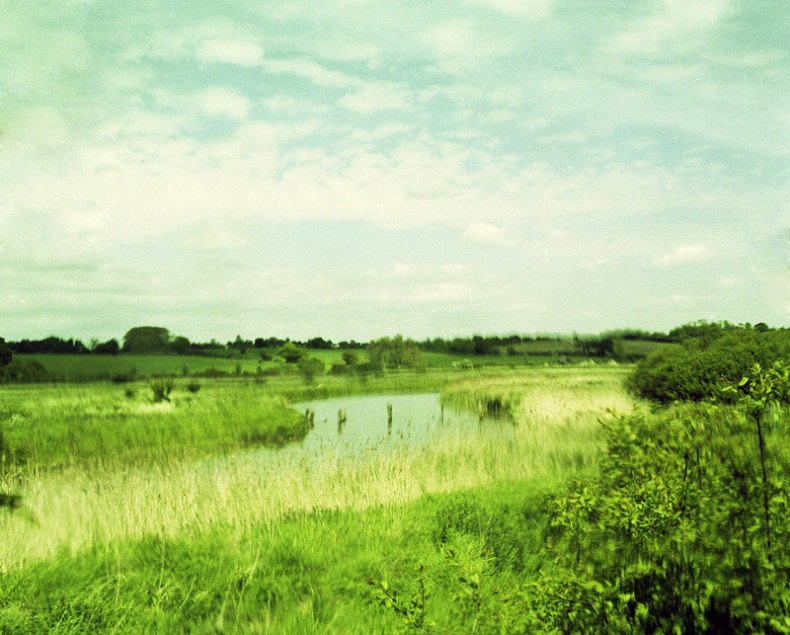
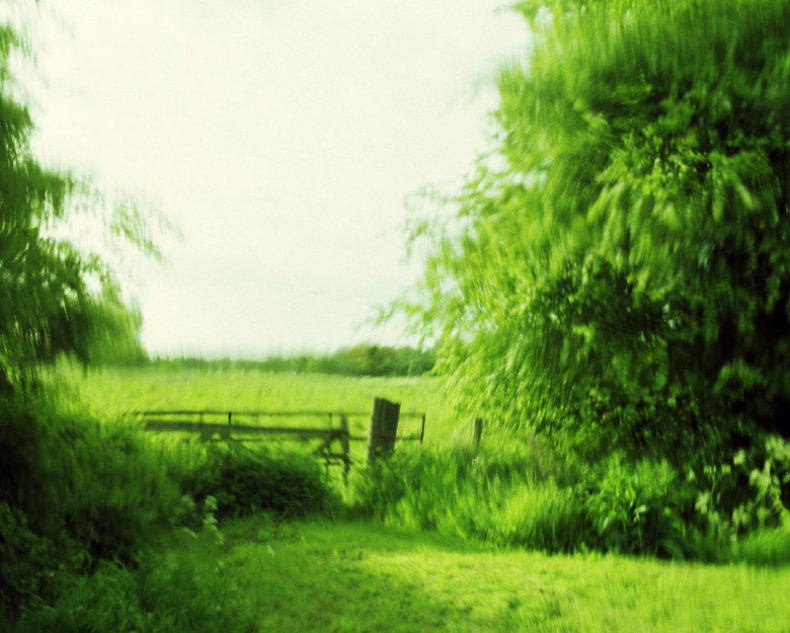
Around the end of the 18th Century and during the 19th Century when landscape emerged as a subject to admire and depict for its aesthetic values many aids were used by artists as well as tourists to strengthen the experience of the view expanding before them. The aim of the different tools were to appropriate the landscape to facilitate the viewing of it as an image instead of it being three dimensional. The aids framed, flattened, altered the colour or reduced the size of the view. For the series Yellow/Orange/Blue/Green ideas, at the time, about colour and the altering of colour is my main interest. At the time you could find viewing stations with windows which all had different coloured stained glass so that the visitor could view the landscape through the appropriate window for the season – light green for spring, yellow for summer, orange for autumn and light blue for winter. Claude Lorrain Glasses were a set of filters for the artist to use when drawing or painting the landscape. The filters all had different colours to aid highlight different, for that moment, appropriate sensations of the landscape. There were also expressions of an imagined tool that would consist of different coloured pieces of glass that adjusted to, and strengthened the colour of the landscape. To alter the colour of the landscape meant the scenery became flattened as an effect of the similarity of colour throughout. As the differences in colour are erased the compositional elements become more apparent – the scenery starts to resemble a flattened image.
The series Yellow/Orange/Blue/Green are photographs of the landscapes around Constable Country, The Lake District and Epping Forest. The scenery has been photographed through coloured antique glass.
All images ©Emma Wieslander